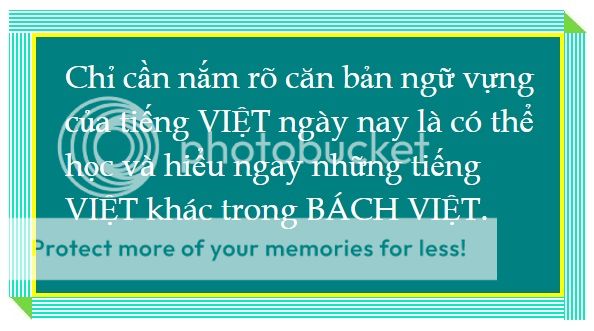Mẹ Trời và Con Đất

|
|
|
|||
|
||||
|
|
|
..............................
|
|
Chỉ cần nắm rõ căn bản ngữ vựng của tiếng VIỆT ngày nay là có thể học và hiểu ngay những tiếng VIỆT khác trong BÁCH VIỆT.
|
|
~~~~~~~~~~~~~~~~~~~~~~~~~~~~~
Yue Việt
Bách Việt/Hundred Yue = Yue or Bai yue is the non-Chinese populations of south and southwest China and northern Vietnam.
The term "Hundred Yue" first appears in the book Lüshi Chunqiu compiled around 239 BC.[5] It was used as a collective term for the non-Chinese populations of south and southwest China and northern Vietnam.[1]
Ancient texts mention a number of Yue states or groups. Most of these names survived into early imperial times:
| Chinese | Mandarin | Cantonese (Jyutping) | Zhuang | Vietnamese | Literal English trans.: |
|---|---|---|---|---|---|
| 於越/于越 | Yūyuè | jyu1 jyut6 | Ư Việt | Yue | |
| 揚越/扬越 | Yángyuè | joeng4 jyut6 | Dương Việt | Yang Yue | |
| 干越 | Gānyuè | gon3 jyut6 | Cán Việt | Gan Yue | |
| 閩越/闽越 | Mǐnyuè | man5 jyut6 | Mân Việt | River Yue | |
| 夜郎 | Yèláng | je6 long4 | Dạ Lang | Night Yue | |
| 南越 | Nányuè | naam4 jyut6 | Namzyied | Nam Việt | Southern Yue |
| 山越 | Shānyuè | saan1 jyut6 | Sơn Việt | Mountain Yue | |
| 雒越 | Luòyuè | lok6 jyut6 | Lạc Việt | Sea Bird Yue | |
| 甌越/瓯越 | Ōuyuè | au1 jyut6 | Âu Việt | (East) Valley Yue | |
| 滇越,盔越 | Diānyuè, Kuīyuè | din1 jyut6, kwai1 jyut6 | Điền Việt, Khôi Việt | Heavenly Yue, Basin Yue |
Chữ Nôm (字喃 "Southern characters") refers to the former transcription system for vernacular Vietnamese-language texts, written using a mixture of original Chinese characters and locally coined nôm characters not found in Chinese to phonetically represent Vietnamese sounds." The character set for chữ nôm is extensive, up to 20,000, there were arbitrary in composition and inconsistent in pronunciation.
Chữ quốc ngữ (字國語 "national language script") means Vietnamese written in romanised script.
Chữ - Vietnamese word (character, script, writing, letter) is derived from the Old Chinese word 字, meaning 'character'.
chữ nho (字儒 "words of Confucians").
Chữ Hán Việt: Sino-Vietnamese (Vietnamese: chữ Hán Việt 詞漢越 "Sino-Vietnamese words") is a term which is used by modern scholars in relation to Vietnam's Chinese-language texts to emphasise local characteristics and particularly the phonology of the Chinese but written in Vietnam character, Alphabet .
chữ Hán (字漢 "words from Han dynasty"), Chinese characters are called Hán tự (漢字 "Han characters/words"), Hán tự was refined and modify from old Yue/ Việt characters/scrip - chữ Khoa Đẩu). Hán văn (漢文 "Han script"), or Chinese refine from old Bai Yue culture from Chu AKA Viet old dynasty been now called Hán văn (漢文) (literally 'Han literature') .
*******************************************************
|
|
Chỉ cần nắm rõ căn bản ngữ vựng của tiếng VIỆT ngày nay là có thể học và hiểu ngay những tiếng VIỆT khác trong BÁCH VIỆT.
|
|
Chữ Việt Cổ Ở Nam Dương Tử.
ĐỌC VÀ SUY GẪM KẾT LUẬN CỦA MỘT BÀI BÁO Ở ĐÀI LOAN
Nghiên cứu gene gần đây xác nhận rằng - Phúc Kiến, Quảng Đông, Khách Gia nhân (Hẹ) đều là hậu duệ của tộc Bách Việt. Trước tiên họ bị người Hán dùng vũ lực chinh phục, sau bị Hán hóa, rồi bị bắt phải nhận kẻ thù làm Tổ Tiên và tự nhận mình là người Hán khi người tộc Bắch Việt bị thua trận với người Hán. Họ chính là người Bách Việt mất nước, mất gốc trên chính quê hương của họ, bị dị tộc thực dân Hán thống trị hai ngàn năm mà không tự biết, ngay cả cho dù sự khác biệt về thể chất, vóc dáng và diện mạo nhìn thấy rõ ràng.
Người Hán đối với người phương Nam thực hiện chính sách Hán dân hóa (Hán nô hóa) trong lịch sử tội ác diệt chủng là một mô hình thành công nhất.
http://diendan.lyhocdongphuong.org.vn/chu-de/23954-ch%E1%BB%AF-vi%E1%BB%87t-c%E1%BB%95-%E1%BB%9F-nam-d%C6%B0%C6%A1ng-t%E1%BB%AD/
(基因研究已確認,福建、廣東、客家人都是百越民族的後代。他們先被漢人武力征服,然後漢化,再認敵人為祖,自認漢人。也就是百越人亡國又亡族,被異族殖 民統治兩千年而不自知,即使體質、面貌的差異清楚可見…但漢人對中國南方人的〝漢民化〞(漢奴化)則是史上滅族最成功的典範)。
福建人、廣東人、客家人都是漢化的百越族 基 因研究已確認,福建、廣東、客家人都是百越民族的後代。他們先被漢人武力征服,然後漢化,再認敵人為祖,自認漢人。也就是百越人亡國又亡族,被異族殖民統 治兩千年而不自知,即使體質、面貌的差異清楚可見(華北人仍有82%漢代漢人血統,且胡漢本同源)。日本人對台灣人的皇民化因時間不夠長而失敗了,但漢人 對中國南方人的〝漢民化〞(漢奴化)則是史上滅族最成功的典範。
myweb.ncku.edu.tw
(Genetic research has confirmed that Fujian, Guangdong and Hakka families are descendants of the hundred ethnic minorities.) They were first conquered by the Han, then the Chinese, and then the enemy as the ancestors, the Han nationality. That is, the hundred more people perish and the Dead clan, was alien colonial rule 2000 years without self-knowledge, even if the physique, the appearance of the difference is clearly visible...
But Han's "Han" (Han enslavement) to the south of China is the most successful model of genocide in history.
Fujian people, Guangdong people, Hakka families are Chinese hundred ethnic minorities Genetic research has confirmed that Fujian, Guangdong and Hakkas are descendants of the hundred ethnic minorities. They were first conquered by the Han, then the Chinese, and then the enemy as the ancestors, the Han nationality. That is, hundred people perish and the Dead clan, by the alien colonial rule 2000 years without self-knowledge, even if the physique, the appearance of the difference is clearly visible (North China still has 82% Han Chinese descent, and Huhan Ben homology).
The Japanese to the Taiwanese people because the time is not long enough to fail, but Han Chinese to the south of China's "Han" (Han enslavement) is the history of genocide the most successful model.
|
Chỉ cần nắm rõ căn bản ngữ vựng của tiếng VIỆT ngày nay là có thể học và hiểu ngay những tiếng VIỆT khác trong BÁCH VIỆT.
|
||
Một ngày nào đó khi toàn khối Bách Việt đều tham gia việc phục chế ngôn ngữ thì họ sẽ thấy nguồn gốc của họ

No comments:
Post a Comment